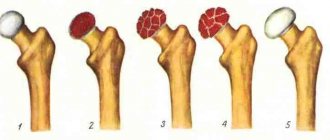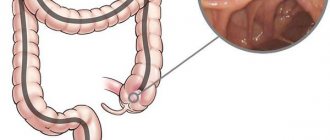Cat scratch disease - manifestations of the disease and methods of treatment
Cat scratch fever (felinosis, benign lymphoreticulosis, Mollare granuloma) is a serious infectious disease. Appears as a result of cat bites or scratches. The disease is characterized by inflammation of regional lymph nodes - papules initially suppurate, sometimes conjunctivitis, angiomatosis occurs, and the liver is affected. Fever and general poisoning of the body are noted.
The source of its occurrence is a mobile rod-shaped bacterium. Its habitat is the oral cavity of mammals. Mostly cats, dogs, monkeys. The disease most often affects children and young people under the age of 20. The infection enters the body through licking, scratching, or biting through damaged skin. Often through scratches.
That is why felinosis is called cat scratch disease. However, it is worth remembering that you can become infected from any mammal infected with this disease when a viral bacterium enters the human body.
Causes and risk factors
The causative agent of cat scratch disease is Rochalimaea henselae. Polymorphic non-motile gram-negative bacterium; is morphologically similar to representatives of the genus Rickettsia and exhibits similar properties to Afipia felis. A motile, non-fermenting, gram-negative rod-shaped bacterium. It is fastidious for in vitro cultivation, preferably grown on HeLa cells.
Risk factors for developing the disease:
- Disorders of cellular immune responses
- HIV infection, especially when the CD4+ lymphocyte count is below 100 in 1 μl
- Long-term use of GC, azathioprine, cyclophosphamide, cyclosporine, alcohol abuse.
Penetration of the pathogen through damaged skin or, less commonly, through the mucous membrane of the eye subsequently leads to the development of an inflammatory reaction in the form of a primary affect. Then, through the lymphatic ducts, the microbe enters the regional lymph nodes, which is accompanied by the occurrence of lymphadenitis. Morphological changes in the lymph nodes are characterized by reticulocellular hyperplasia, the formation of granulomas, and later microabscesses. The disease is usually accompanied by hematogenous dissemination with the involvement of other lymph nodes, liver, central nervous system, and myocardium in the pathological process. A severe and prolonged, and often atypical course of the disease is observed in patients with HIV infection.
Various mammals (cats, dogs, monkeys, etc.) are considered the reservoir and source of infection. The disease is registered everywhere. In regions with a temperate climate, an increase in incidence is noted from September to March. Considering the nature of the infection, the main contingent is persons under 21 years of age; 90% have a history of bites or scratches caused by kittens. Studies conducted on animals have shown that the microorganism does not cause the development of any pathology in them and they do not respond with the development of hypersensitivity reactions when the pathogen antigen is administered intradermally. Incidence: 10:100,000 population (25,000 cases annually).
What increases the chance of a more severe course of felinosis
A person who has come into contact with Bartonella hensele develops a severe or even atypical form of felinosis in the following situations:
- there is a congenital pathology of the cellular immune system;
- after a serious illness or surgery;
- when you need to take glucocorticoids (for the treatment of autoimmune diseases such as rheumatoid arthritis, autoimmune hepatitis, psoriasis, and so on);
- after treatment with cytostatic drugs (cyclophosphamide, cyclosporine, azathioprine);
- in persons who abuse alcohol;
- in patients with diabetes mellitus;
- in HIV-infected people.
In the latter case, felinosis is very severe and long-lasting; sometimes its manifestations are so atypical that they don’t even think about this diagnosis.
How does cat scratch disease manifest itself - symptoms and first signs
A scratch or site of a cat bite heals slowly for the first 3-10 days, without causing any concern on the part of the person: it may hurt a little or irritate, like a regular skin injury. This is the incubation period; At this time, the pathogen overcomes the barriers of the integumentary tissue and multiplies. This period can extend up to 3 weeks, then at the time the first symptoms of felinosis appear, skin trauma no longer exists.
- After the time it takes for the microbe to penetrate and accumulate (3 days to 3 weeks, on average 7-14 days), a rash appears in the place where there was a scratch or where a crust remains. It looks like several nodules the size of a millet grain to a pea, which do not itch or hurt.
- After 2-3 days, the period of the height of the disease begins: such nodules fester and open up on their own, after which they become covered with a crust and may begin to itch slightly (especially if a child with allergies has been scratched). Within 1-3 weeks, the crusts dry and fall off, after which the bite site ceases to be noticeable: there are no scars or darker areas of skin left. This means that Bartonella has multiplied in sufficient quantities, overcome the local immunity of the skin area and entered the lymphatic system.
- After 10-14 days (less often - longer) from the moment the first nodules appear, the microbe is caught by regional lymph nodes - local filters that try to prevent it from passing further.
If the arm below the elbow was bitten, one or more groups of lymph nodes enlarge: elbow, axillary, cervical. The order in which lymphadenitis appears may be exactly this, but the axillary nodes may immediately enlarge, while the ulnar nodes remain unchanged. Also, starting from the axillary fossa, the lymph nodes will enlarge if the forearm or shoulder is damaged by claws or teeth.
If the bite/scratch is on the leg, the lymph nodes in the femoral and groin area become inflamed. When the face is scratched, the submandibular, anterior or posterior ear groups may be the first to react; after which one or more lymph nodes from the cervical group enlarge.
Signs that indicate that the lymph nodes are damaged due to felinosis:
- lymph nodes gradually increase, reaching from 5 to 10 cm in diameter;
- the skin over them is not red or hot to the touch;
- lymph nodes can be moved - they do not pull the skin along with them;
- they are dense;
- it hurts to feel them;
- when enlarging the entire group of nodes, probing them, you can “roll” them independently of each other: they are not soldered together.
Enlarged lymph nodes are accompanied by a deterioration in the person’s general condition. The following symptoms appear:
- fever, sometimes up to 39°C or higher;
- weakness;
- poor sleep;
- sweating;
- headache;
- malaise;
- loss of appetite;
- heartbeat.
Not everyone’s temperature rises to such high numbers: in some cases, it may be completely absent. The increase in temperature lasts from a week to a month, other symptoms gradually disappear within 2 weeks. Lymph nodes remain enlarged for up to three months. In half of the cases, they suppurate and can spontaneously open: then thick yellow-green pus is released to the surface, which, when taken for bacteriological examination, does not show signs of bacterial infection (as you remember, Bartonella does not grow on nutrient media).
During the same period, a reddish rash may appear on the skin of a person’s body or limbs, occupying larger or smaller areas of the skin. It does not itch or hurt and disappears after a few days.
During the period of lymph node enlargement, the following may also be observed:
- a feeling of “needles” or discomfort in the left hypochondrium: this may indicate an enlarged spleen, which can also be affected by felinosis. Enlargement of the liver and spleen can also be detected on an ultrasound scan of the abdominal cavity, without being accompanied by any symptoms;
- discomfort and pain in the right hypochondrium - this is an enlargement of the liver, which is also a filter on the way of Bartonella, which by this time has entered the blood;
- heart pain, arrhythmias. These are signs of heart damage;
- enlargement of lymph nodes located far from the site of infection.
The above symptoms of cat scratch disease occur in people whose immunity is not active enough and allows the infection to enter the blood. In those people who are called “immunocompromised” (who have received drugs that suppress the immune system, suffer from diabetes mellitus, congenital immunodeficiency, HIV, chronic alcoholism), felinosis proceeds completely atypically. In them, the infection can remain in the body forever, causing chronic disease.
Usually the disease ends a month or a little less after the first lymph node enlarges: the temperature drops, the headache goes away, sleep and appetite are restored, the lymph nodes gradually decrease in size and become dense little “balls” that are not fused to each other and the skin. Very rarely, with moderately weak immunity, felinosis can last 1-2 years, when its symptoms either subside or reappear.
Complications
When Bartonella, which causes felinosis, spreads through the blood to various internal organs, the following may occur:
- pleurisy;
- myocarditis;
- spleen abscess;
- osteomyelitis;
- arthritis;
- atypical pneumonia.
The bacterium can also cause significant blood complications, consisting of a decrease in various blood cells:
- platelets (thrombitopenic purpura);
- red blood cells (hemolytic anemia);
- eosinophilic leukocytes (eosinophilia);
- leukocytes (leukoclastic vasculitis).
Atypical form
When infectious agents come into contact with the mucous membrane of the eye, there is a high risk of developing conjunctivitis. Symptoms in case of contact with skin:
- fever;
- the appearance of ulcers;
- suppuration of injuries;
- After healing, scars form.
This form of felinosis occurs in 10% of cases. It is usually diagnosed in children, as well as the elderly (people whose body reactivity is reduced). The duration of the disease is from 6 to 8 weeks.
Diagnostics
Diagnosis of the classic form of this disease is not difficult. The main significance is the presence of direct contact with the cat, the presence of a primary affect, the development of regional lymphadenitis, with the absence of a reaction from other lymph nodes.
To confirm the diagnosis, a microbiological blood test and a histological study of a biopsy of a lymph node or papule with staining of the sections are performed.
Differential diagnosis is carried out with the following diseases: progressive focal leukoencephalopathy, cryptococcal meningitis, cerebral toxoplasmosis, acute hepatitis, infectious mononucleosis, influenza, histoplasmosis, coccidioidosis, cryptococcosis, lymph node cancer, lymphoma, streptococcal and staphylococcal infections, borreliosis, babeshiosis, rickettsiosis, myco bacteriosis, erysipeloid , tularemia, pasteurellosis, bubonic plague, sporotrichosis.
Prevention
Prevention comes down to the following rules:
- After a cat bite, you should immediately wash the area with soap and water to disinfect the wound.
- Wash your hands with soap and water every time after playing with cats, especially for people with weakened immune systems.
- Since kittens under one year of age are most at risk of infection due to the presence of bacteria in the blood, people with weakened immune systems should adopt cats older than one year.
- It is not recommended to play with or pet stray cats.
- Cats should not be allowed to lick open wounds or scratches on the skin.
- Cats' nails should be trimmed.
- Veterinarian-approved flea control products should be used at all times.
- Cats should be kept indoors to reduce their exposure to fleas and avoid infestation.
If, however, you or your child are exposed to the infection described, do not risk self-medication, consult a doctor!
Treatment for cat scratch disease
Therapy in its typical form is carried out on an outpatient basis. The infection is classified as self-limiting (it can go away without treatment), but medication can help the body cope with the pathogen faster and mitigate the symptoms of the disease.
Drug treatment:
- Non-steroidal anti-inflammatory drugs to relieve the inflammatory reaction (ibuprofen, indomethacin, diclofenac and their modern analogues).
- Antihistamines (Claritin, Zyrtec, Cetrin, Erius and others).
- Etiotropic therapy includes the prescription of antibacterial drugs: azithromycin, doxycycline and its derivatives, erythromycin and its derivatives, and the effectiveness of ciprofloxacin, rifampicin, bactrim, and gentamicin in felinosis has also been established. It is believed that such therapy should be prescribed only for severe forms of infection with the development of atypical forms, as well as when felinosis occurs in immunocompromised individuals (HIV infection, chronic diseases, recipients of organ and tissue transplants, and others).
If abscesses occur in the area of the lymph nodes, surgical assistance is required (opening, removal of pus), which affects the duration of healing and sclerosis.
What are the forecasts?
If an adult or child has a strong immune system, the chances of recovery and recovery are as favorable as possible. The disease can go away on its own; after recovery, the body develops a permanent immune defense. When the infection spreads, the prognosis depends on the individual characteristics of the patient’s body, the timeliness and adequacy of treatment. When complications such as central nervous system damage develop, the chances of a full recovery worsen because the brain tissue has undergone irreversible changes.








